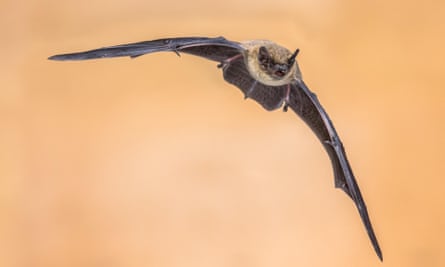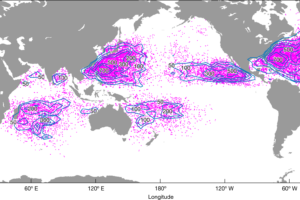Researchers have developed arrays of AI-controlled cameras and microphones to identify animals and birds and to monitor their movements in the wild – technology, they say, that should help tackle Britain’s growing biodiversity problem.
The robot monitors have been tested at three sites and have captured sounds and images from which computers were able to identify specific species and map their locations. Dozens of different birds were recognised from their songs while foxes, deer, hedgehogs and bats were pinpointed and identified by AI analysis. No human observers are involved.
“The crucial point is the scale of the operation,” said Anthony Dancer, a conservation specialist at the Zoological Society of London (ZSL). “We have captured tens of thousands of data files and thousands of hours of audio from these test sites and identified all sorts of animals from them. We couldn’t have done it at that scale using human observers. Only AI made it possible.”
Land alongside rail lines – at Barnes, Twickenham and Lewisham in London – was chosen for the project’s test sites. Owned by Network Rail, which has played a key role in setting up the project, the areas are fenced off to prevent people straying on to lines and are visited fairly infrequently by track maintenance staff.
“Access to relatively wild land was therefore easy – an important factor for starting our project,” said Dancer.
“And now that we have demonstrated the technology’s promise, we can expand to other areas.”

Network Rail owns more than 52,000 hectares of land, and many of these areas play a key role in protecting the nation’s biodiversity.
“Take birds like the Eurasian blackcap, blackbird and great tit,” said Neil Strong, biodiversity strategy manager for Network Rail. “All three species require healthy environments – including good supplies of berries and nuts – and all three were detected by AI from the acoustic signals collected by our sensors at our three test sites. That is encouraging and provides important benchmarks for measuring biodiversity in future.”
Other creatures pinpointed by the AI monitors included six species of bat, including the common pipistrelle.
“Bats almost certainly use railway bridges for roosting,” Dancer told the Observer. “So if we can get more detailed information about the exact locations of their roosts using AI monitors, we can help protect them.”
This point was underlined by Strong. “In the past, we have had to estimate local wildlife populations from the dead animals – such as badgers – that have been left by the track or the roadside. This way we get a much better idea of population sizes.”
Other animals that regularly commute on UK rail lines include the hedgehog, as was revealed by the project. “Hedgehogs are really constrained to certain locations because they get fenced in,” said Strong. “But there are ways round that problem. In Scotland they are creating hedgehog highways on rail lines, which involves cutting small holes into the bases of all new fencing that is put up so hedgehogs can pass through but nothing larger can get in.”
Now ZSL and Network Rail are planning to expand the use of AI monitors to other areas, including Chobham in Surrey and the New Forest. “On the sites that we have already tested, we found signs of more than 30 species of bird and six species of bat, as well as foxes and hedgehogs, so we were pleasantly surprised with the relatively healthy levels of wildlife we found in London,” said Dancer. “However, that was not really the main purpose of our project.
“The aim was to show that AI-led technology – linked with acoustic and camera traps – could be used effectively to survey wildlife on Network Rail land but also in other areas in the UK. It will tell us how species are moving in response to climate change and how we should be managing vegetation, not just beside rail lines but on road verges and other places.”
The crucial point is that machine learning – AI – will be vital to protecting biodiversity as the country heats up. “This technology will require the analysing of tens of thousands of hours of recordings and hundred of thousands of images,” said Strong. “Realistically, only computers can do that for us.”
Source : The Guardian











Add Comment